Hotline
+86-136 8495 9862
Email:cennia@szmizhi.com
Add::104,Building 27,Third Industrial Zone, Longxi Community,Longgang District,Shenzhen,China.
Coil Forming & Handling Equipment
Surface Treatment Equipment
Solutions
Application
About Us

Welcome to MIZHI
For consultation/feedback, please call the service hotline: +86-136 8495 9862 Email:cennia@szmizhi.com
Our company is well received by customers with perfect solutions, good product quality, performance, and after-sales
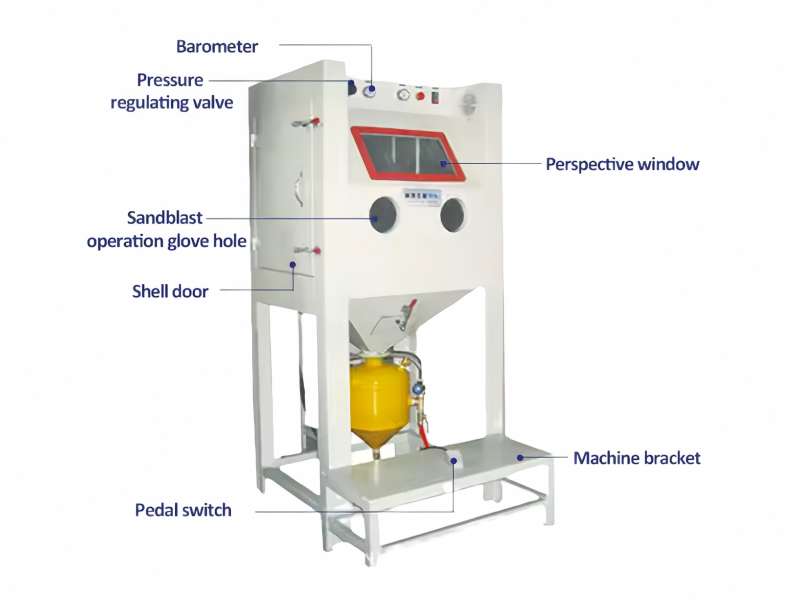
In the industrial landscape, rust is a persistent and costly problem that can compromise the integrity, functionality, and lifespan of metal structures and components. High pressure sand blasting machines have emerged as a highly effective solution for rust removal, offering a powerful and efficient method to restore metal surfaces to their original state. These machines utilize the force of high velocity sand particles propelled by compressed air to blast away rust, scale, paint, and other contaminants, leaving behind a clean and prepared surface for further treatment or application.
The demand for high pressure sand blasting machines for rust removal has grown significantly across various industries, including construction, manufacturing, shipbuilding, and maintenance. Their ability to handle large scale rust removal tasks quickly and effectively makes them an essential tool for ensuring the durability and reliability of metal assets. This article will provide a comprehensive overview of high pressure sand blasting machines for rust removal, exploring their working principles, key components, advantages, applications, and future trends.
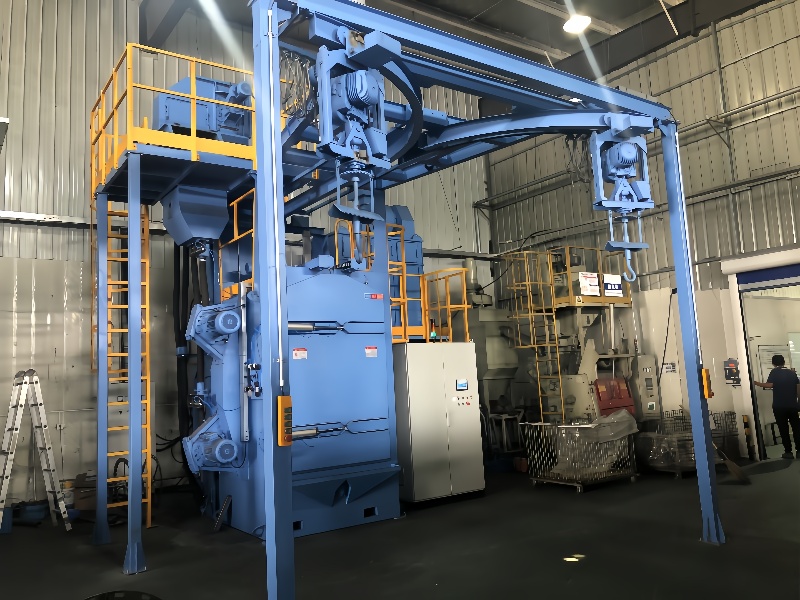
Shot peening has emerged as a pivotal technology in metalworking, offering a non-heat treatment method to enhance surface hardness and mechanical properties of metallic components. Unlike traditional heat treatment, which can alter material microstructure throughout the part, shot peening selectively hardens surfaces by inducing compressive residual stresses, making it ideal for components where core ductility must be preserved while improving surface durability. This process is particularly critical for parts subjected to wear, fatigue, and corrosion, such as gears, shafts, and engine components, where surface integrity directly impacts service life.
Shot peening machines for surface hardening are designed with:
Controlled shot impact energy to induce targeted plastic deformation
Precision media management for consistent surface modification
Advanced process monitoring to ensure hardness uniformity
Adaptability to diverse metal alloys and component geometries
The technology has evolved to address the unique challenges of hardening different metal types, from low-carbon steels to high-strength titanium alloys, by leveraging scientific principles of plastic deformation and residual stress engineering.
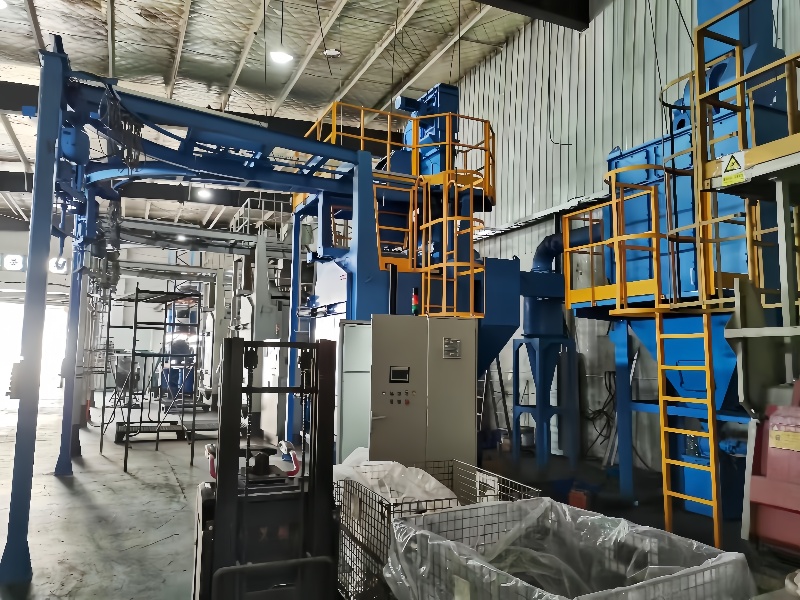
In the fast paced world of modern manufacturing, mass production demands efficiency, consistency, and high quality output. Automated shot peening machines have emerged as a revolutionary solution, addressing these requirements in the crucial process of surface treatment. Shot peening, a technique that involves propelling small spherical particles onto a workpiece's surface to induce compressive stresses and enhance fatigue resistance, has been transformed by automation.
Automated shot peening machines for mass production are designed to handle large volumes of workpieces with minimal human intervention. They combine advanced mechanical engineering, sophisticated control systems, and intelligent automation technologies to ensure that each component receives uniform and precise shot peening treatment. This article will explore the various aspects of these machines, including their design features, working principles, key benefits, applications across industries, and future trends, highlighting how they are reshaping the landscape of mass manufacturing.
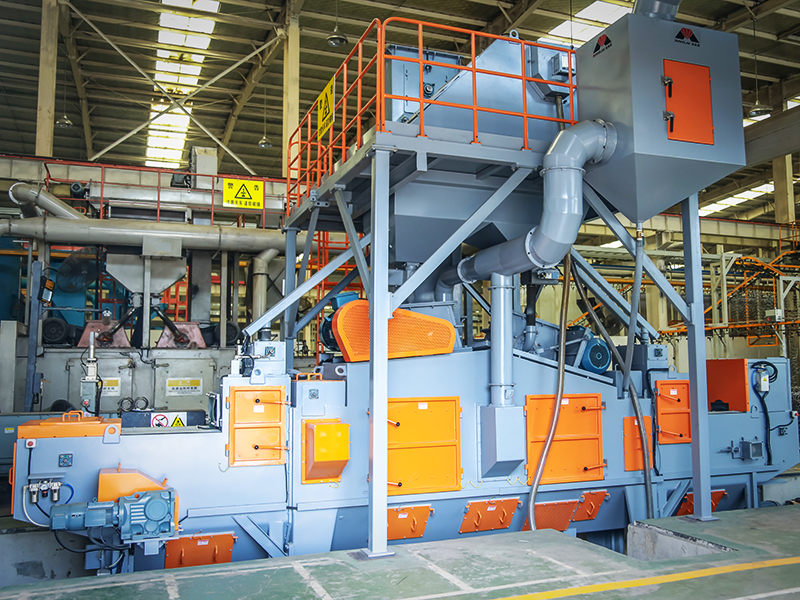
Shot peening has evolved from a rudimentary surface treatment into a highly sophisticated process critical for enhancing the fatigue life and stress resistance of engineered components. At the heart of this transformation lies precise intensity control, which enables manufacturers to tailor compressive residual stresses with extraordinary accuracy. Unlike conventional peening systems that rely on approximate settings, modern machines with precise intensity control can achieve variations as low as ±1%, ensuring consistent results across complex geometries and high-value materials. This level of precision is indispensable for industries such as aerospace, automotive, and medical devices, where component failure can have catastrophic consequences.
Precise intensity control in shot peening machines encompasses:
Ultra-stable shot velocity regulation (±1% tolerance)
Dynamic media size and flow rate adjustment
Real-time process monitoring with feedback loops
Digital recipe management for repeatability
This technology has revolutionized the peening process, enabling manufacturers to meet the stringent requirements of modern engineering materials, including titanium alloys, nickel-based superalloys, and advanced composites.

In the realm of modern manufacturing and engineering, the demand for components with exceptional fatigue resistance has become increasingly crucial. High stress environments, cyclic loading, and extended service life requirements pose significant challenges to the integrity of mechanical parts. High intensity shot peening machines have emerged as a game changing solution, offering a highly effective method to enhance the fatigue resistance of various components.
Shot peening, a surface treatment process, involves propelling small spherical particles, known as shot, at high velocities onto the surface of a workpiece. High intensity shot peening machines take this process to the next level, delivering a more intense and precisely controlled shot impact. By inducing compressive residual stresses on the surface of components, these machines can significantly improve their fatigue life, reduce the likelihood of crack initiation and propagation, and enhance overall mechanical performance. This article will provide an in depth exploration of high intensity shot peening machines for fatigue resistance, covering their working principles, key components, applications, advantages, and future trends.

Shot peening has emerged as a critical surface treatment technology in aerospace manufacturing, enabling the enhancement of fatigue life and stress resistance in high-value components. Unlike conventional shot blasting, which focuses on cleaning or finishing, shot peening for aerospace applications involves the precise acceleration of metallic or ceramic shot to induce compressive residual stresses in component surfaces. This process is indispensable for parts subjected to cyclic loading, such as turbine blades, landing gear components, and engine shafts, where even minor surface defects can lead to catastrophic failures.
Aerospace-grade shot peening machines are designed with:
Ultra-precise shot velocity control (±2% tolerance)
Advanced media classification to micron-level accuracy
Multi-axis component manipulation for complex geometries
Stringent process monitoring to meet NADCAP and OEM standards
The technology has evolved significantly to address the unique challenges of aerospace materials, including titanium alloys, nickel-based superalloys, and composite structures, where process consistency and traceability are non-negotiable.
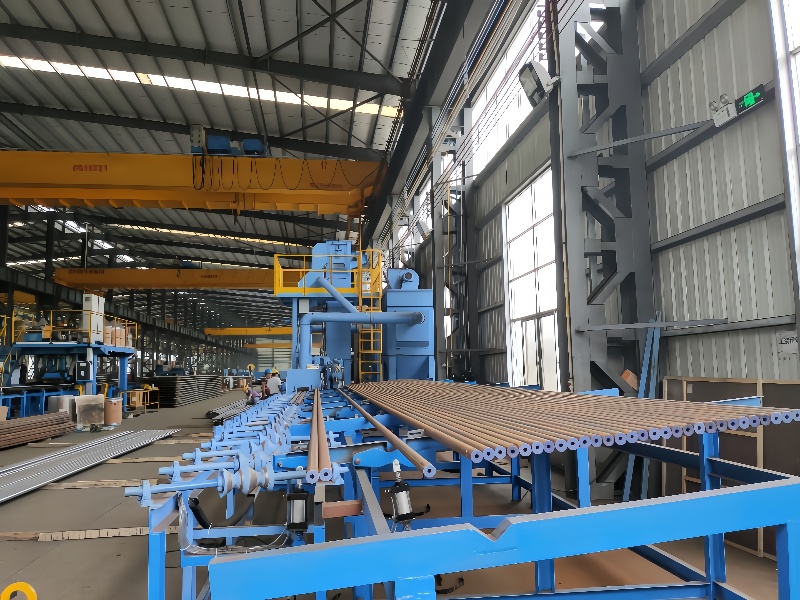
In the dynamic landscape of industrial pipeline manufacturing and maintenance, the need to treat pipes of varying diameters has driven the development of specialized pipe shot blasting machines. These machines are engineered to accommodate a wide range of pipe sizes, from small-bore tubing to large-diameter industrial pipelines, ensuring consistent surface treatment regardless of dimensions. The ability to handle different pipe diameters efficiently is critical for industries such as oil and gas, water treatment, construction, and chemical processing, where pipelines of diverse specifications are ubiquitous.
This article delves into the design principles, operational mechanisms, and application scenarios of pipe shot blasting machines tailored for different pipe diameters. It explores how these machines balance versatility with precision, addressing the unique challenges posed by varying pipe sizes while maintaining high standards of surface cleanliness and preparation.
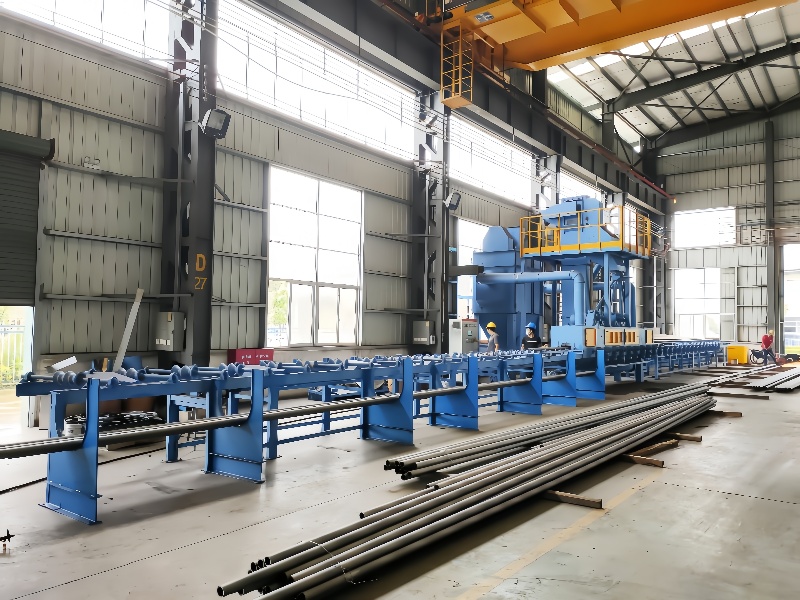
Pipe shot blasting machines have evolved significantly to meet the diverse surface treatment needs of the pipeline industry, with adjustable nozzle angle technology emerging as a game-changer for precision and versatility. Unlike fixed-nozzle systems, which struggle to adapt to varying pipe geometries and surface requirements, these machines enable real-time adjustment of blasting nozzles to optimize coverage, intensity, and efficiency. This innovation is particularly critical for processing pipes with complex features such as bends, weld seams, and threaded ends, where uniform surface treatment is essential for coating adhesion, corrosion resistance, and structural integrity.
Adjustable nozzle angle systems are designed to:
Adapt to Diverse Pipe Configurations: Handle straight pipes, elbows, tees, and other fittings with equal effectiveness.
Optimize Blasting Intensity: Tailor nozzle angles to deliver varying degrees of abrasion based on surface conditions.
Enhance Operational Efficiency: Reduce setup times and minimize rework by eliminating the need for multiple machine setups.
Improve Surface Consistency: Ensure uniform roughness and cleanliness across complex geometries.
This technology has revolutionized pipe surface preparation in industries ranging from oil & gas to construction, enabling higher quality finishes and greater process flexibility.